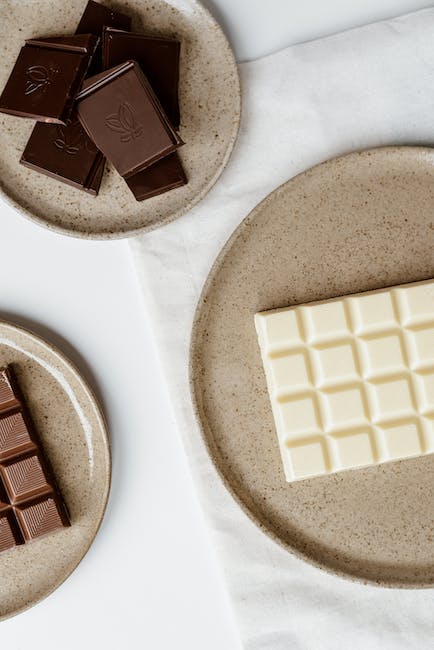As connoisseurs of chocolate, we all know that the flavor of chocolate can vary significantly depending on the origin of the cacao beans and the percentage of cacao in the chocolate. Chocolate’s flavor results from a complex interplay of genetics, terroir, processing, and storage conditions. In this article, we will explore the role of cacao content and terroir in the flavor profile of chocolate and how they impact the taste of chocolate that we all love.
The Role of Cacao Content
The percentage of cacao in chocolate is one of the most critical factors that affect its flavor. The cacao content determines the intensity of the chocolate flavor and its bitterness. Chocolate with a high percentage of cacao has a more intense flavor and a bitter taste. In contrast, chocolate with a lower rate has a milder flavor and a sweeter taste.
The cacao content also affects the texture and mouthfeel of chocolate. Chocolate with a higher percentage of cacao tends to be denser and has a smoother and creamier texture. On the other hand, chocolate with a lower rate of cacao has a lighter texture and a more brittle feel.

It is essential to note that the cacao content alone does not determine the flavor of chocolate. Other factors, such as the origin of the cacao beans, also play a crucial role.
The Role of Terroir
Terroir is a French term that refers to the environmental factors, such as soil, climate, and topography, that affect the flavor of crops. The terroir of the cacao beans significantly impacts the taste of chocolate. The cacao beans grown in different regions have different flavor profiles depending on the soil, climate, and other environmental factors.
For example, cacao beans grown in Madagascar have a fruity, acidic flavor, while cacao beans grown in Venezuela have a nutty, earthy flavor. The terroir of the cacao beans also affects the aroma of the chocolate, which is an essential component of its flavor profile.

It is also worth noting that the terroir of the cacao beans affects the cacao’s genetic makeup. The genetic diversity of cacao is highest in South America, where it originated. This diversity has been preserved due to the isolation of cacao trees in different regions, leading to distinct flavor profiles.
Understanding the Flavor Wheel of Chocolate
Chocolate’s flavor results from the interplay of different factors, such as cacao content, terroir, and processing. To understand the flavor profile of chocolate, we can use a flavor wheel, which categorizes the different flavors we can taste in chocolate.
The flavor wheel divides the chocolate flavors into three categories: sweet, sour, and bitter. The sweet category includes flavors such as caramel, honey, and vanilla. The lousy category includes fruity and acidic flavors such as citrus and berries. The bitter category contains coffee, tobacco, and earthy notes.
The flavor wheel can help connoisseurs understand the different flavor notes in chocolate and identify the origin and cacao content that might have produced those flavors.
Conclusion
Chocolate’s flavor results from the interplay of different factors such as cacao content, terroir, and processing. The cacao content determines the intensity of the chocolate flavor and its bitterness, while the terroir of the cacao beans affects its flavor profile and aroma. Understanding the different flavor notes in chocolate can help connoisseurs identify the origin and cacao content that might have produced those flavors and appreciate the complexity of chocolate.
As a chocolate connoisseur, it is essential to explore different types of chocolate and compare their flavor profiles. By comparing chocolates with varying percentages of cacao and from different origins, you can train your palate and learn to appreciate the subtle differences in flavor.
In conclusion, the flavor of chocolate is a result of the interplay of various factors, and understanding these factors is essential for anyone who wishes to appreciate chocolate as a connoisseur. The cacao content determines the intensity and bitterness of the chocolate flavor, while the terroir of the cacao beans affects its flavor profile and aroma. By exploring different types of chocolate and comparing their flavor profiles, you can train your palate and develop a deep appreciation for the complexity of chocolate.
FAQ’s
Q: What is terroir?
A: Terroir is a French term that refers to the environmental factors, such as soil, climate, and topography, that affect the flavor of crops.
Q: How does cacao content affect the flavor of chocolate?
A: The cacao content determines the intensity and bitterness of the chocolate flavor. Chocolate with a higher percentage of cacao has a more intense flavor and a bitter taste. In comparison, chocolate with a lower rate has a milder flavor and a sweeter taste.
Q: What is the flavor wheel of chocolate?
A: The flavor wheel of chocolate categorizes the different flavors we can taste in chocolate into three categories: sweet, sour, and bitter. The sweet category includes flavors such as caramel, honey, and vanilla. The lousy category includes fruity and acidic flavors such as citrus and berries. The bitter category includes coffee, tobacco, and earthy notes.
Q: How can I appreciate chocolate as a connoisseur?
A: By exploring different types of chocolate and comparing their flavor profiles, you can train your palate and develop a deep appreciation for the complexity of chocolate. Understanding the other factors that affect the flavor of chocolate, such as cacao content and terroir, is also essential for anyone who wishes to appreciate chocolate as a connoisseur.
